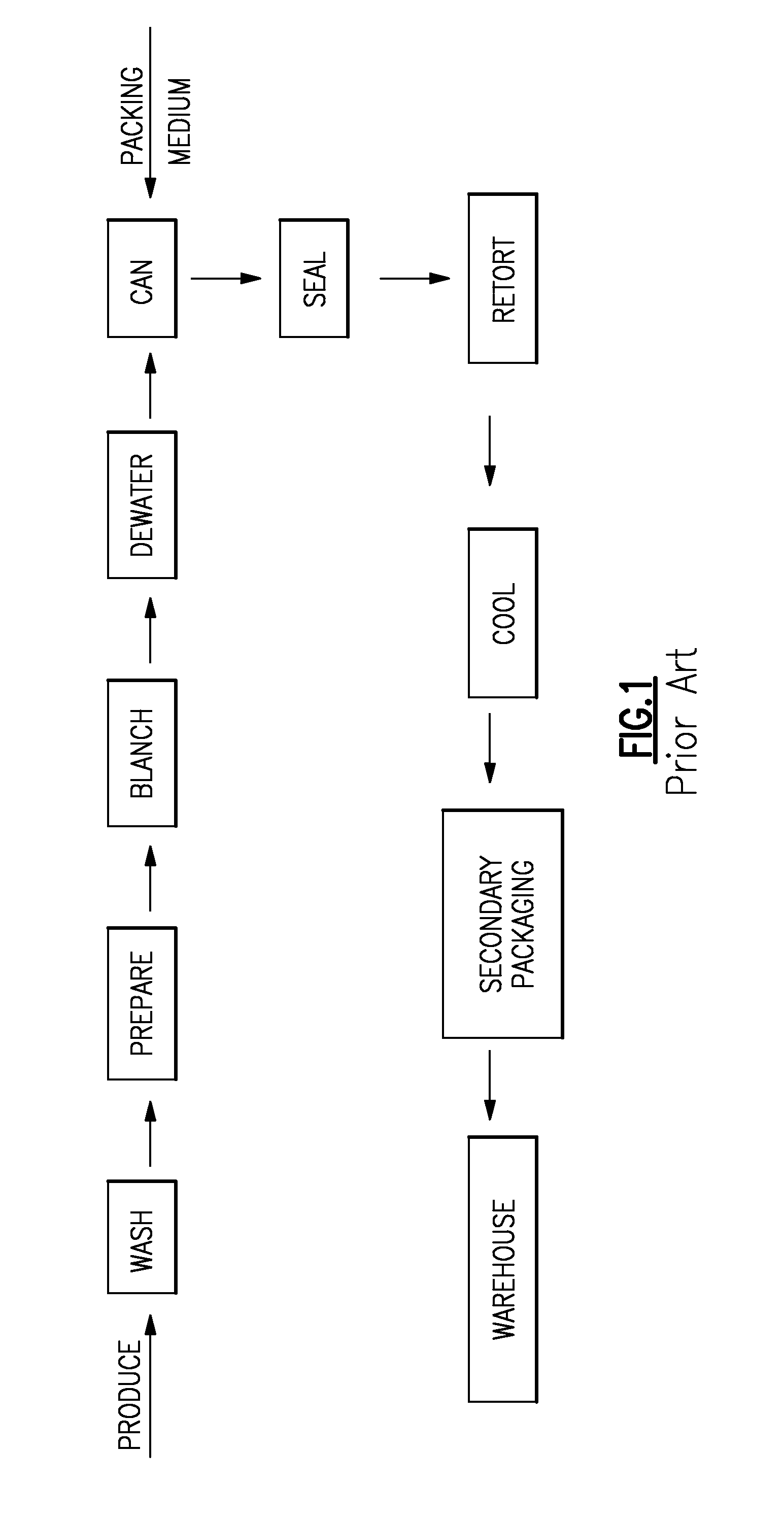Methods for Sterilizing, Stabilizing and Packaging Harvested Produce
a technology of stabilizing and packaging produce and harvesting, applied in the directions of milk preparation, food preparation, fruits/vegetable preservation using acids, etc., can solve the problems of reducing product quality, deteriorating quality of fruits and vegetables, and rarely economically viable transportation of fruits and vegetables from different parts of the world
- Summary
- Abstract
- Description
- Claims
- Application Information
AI Technical Summary
Benefits of technology
Problems solved by technology
Method used
Image
Examples
example 1
[0022]Diced, chunky, sliced or halved peaches were loaded into the blanching tank containing syrup from 8-12° Brix, depending on Brix value of the incoming fruit. The fruit is blanched in sugar syrup or fruit juice to create an isotonic condition and to prevent excessive loss of fruit solids to the blanching solution. The sugars used to create an isotonic condition range from monosaccharides, disaccharides, oligosaccharides, and polyols such as sorbitol or xylitol. A silicone based antifoaming agent was also added. The pH of the incoming peaches typically ranges from 3.3 to 4.0. The feed tank was charged with sugar syrup or fruit juice and the pH adjusted (by adding 800-1400 ppm of ascorbic acid) until the packing medium has about the same Brix value as the peaches (8-12° Brix target at 10° Brix). The fruit to syrup ratio for the peaches can range from about 90:10 to 60:40, but is optimally about 75:25 for peaches. The syrup and fruit mixture then is transferred to the ohmic process...
example 2
[0025]Same as Example 1 except that syrup in the feed tank was acidified by food grade acids or their salts to a pH value 0.1-1.0 unit higher than the pH of incoming fruits.
example 3
[0026]Example 3 is similar to Example 1 except the conductivity of the syrup and the blanched peaches were equalized.
PUM
 Login to View More
Login to View More Abstract
Description
Claims
Application Information
 Login to View More
Login to View More - R&D
- Intellectual Property
- Life Sciences
- Materials
- Tech Scout
- Unparalleled Data Quality
- Higher Quality Content
- 60% Fewer Hallucinations
Browse by: Latest US Patents, China's latest patents, Technical Efficacy Thesaurus, Application Domain, Technology Topic, Popular Technical Reports.
© 2025 PatSnap. All rights reserved.Legal|Privacy policy|Modern Slavery Act Transparency Statement|Sitemap|About US| Contact US: help@patsnap.com



